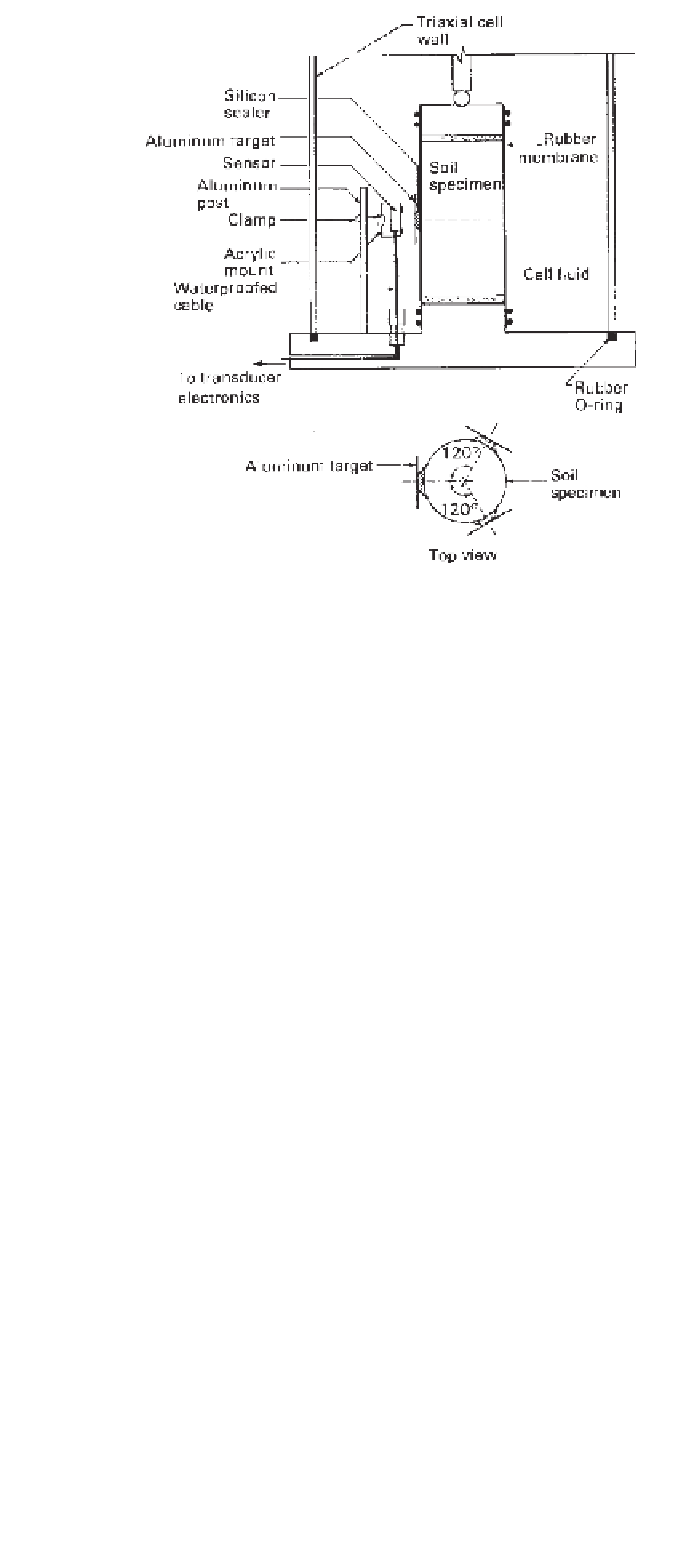Environmental Engineering Reference
In-Depth Information
measured along with the local axial strain near the middle
of the specimen.
11.5 TRIAXIAL TEST PROCEDURES
FOR UNSATURATED SOILS
The testing of unsaturated soils requires great care on the
part of the technician in order to obtain reliable results.
There are a number of technician-related factors that influ-
ence the outcome of the test. The duration of unsaturated
soil triaxial tests is generally considerably longer than the
duration of comparable saturated soil tests. The difference
in duration is mainly related to the reduced coefficient of
permeability of unsaturated soils.
There is a comparable unsaturated soil triaxial test for
each type of commonly performed saturated soil triaxial test.
However, the test procedures for unsaturated soils are gen-
erally more demanding. Since there are two fluid phases
involved (i.e., water and air), it is possible for one fluid
phase to be tested in a drained mode while the other fluid
phase is tested in an undrained mode. This is the situation
when performing a constant-water-content test.
The following sections give consideration to each of the
types of triaxial tests that can be performed on an unsatu-
rated soil. In each case, the computation of the stress states
associated with each test procedure is illustrated.
Specimen
midheight
Figure 11.41
Installation of noncontacting radial deformation
transducer (after Drumright, 1987).
11.5.1 Specimen Preparation
Unsaturated soil specimens obtained from either undisturbed
or compacted samples can be used for shear strength testing.
The unsaturated soil may initially have high matric suction,
but the test might be performed at lower matric suction. For
example, a multistage test on an unsaturated soil often has
the matric suction reduced for the first stage while subse-
quent stages are conducted at higher applied matric suctions
(Ho and Fredlund, 1982b; Gan et al., 1988).
It is often necessary to relax the high initial matric suc-
tion in the specimen prior to performing the test. One way
to reduce the initial matric suction is to impose an applied
air and water pressure such that the corresponding matric
suction approaches zero. The water from the compartment
below the high-air-entry disk must flow upward into the
specimen toward a new equilibrium condition. The equili-
bration process, however, may require a long time due to the
low permeability of the high-air-entry disk. The relaxation
of the initial matric suction can be expedited by wetting the
specimen from the sides and top of the soil specimen. The
relaxation of the initial matric suction is not required for
some modes of testing such as undrained and unconfined
compression.
11.5.1.1 Matric Suction Relaxation for Triaxial Test
A procedure used to relax the initial matric suction
for multistage triaxial
Figure 11.42
Local axial and radial measurement of strain.
(Courtesy of GDS Instruments, London.)
testing was described by Ho and









Search WWH ::

Custom Search